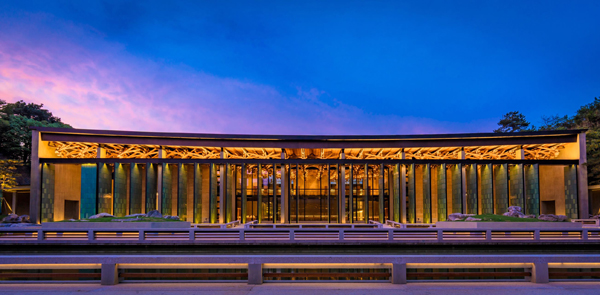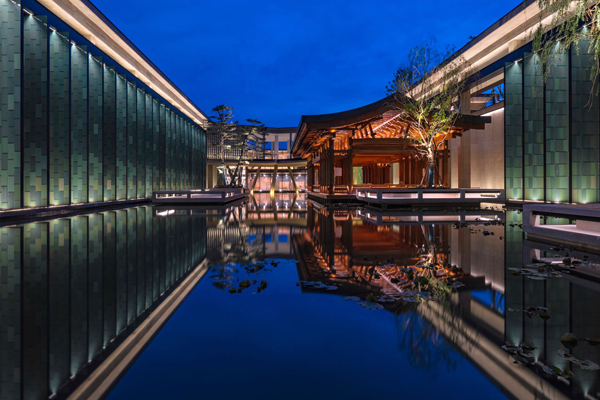Longquan celadon ceramics feature in national archive

The National Archives of Publications and Culture Hangzhou branch features a balance of modern and traditional culture. [Photo provided to chinadaily.com.cn]
China on July 23 inaugurated its National Archives of Publications and Culture for preserving bibliology resources.
The project comprises archives in Beijing and in three other branches in the cities of Xi'an in Shaanxi province, Hangzhou in Zhejiang province and Guangzhou in Guangdong province.
The National Archives of Publications and Culture Hangzhou branch is also known as Wen Run Ge. It is an extensive venue integrating a library, museum, archives and an exhibition hall, among other things.
The design team for the venue was led by Wang Shu, a professor at the China Academy of Art and the first Chinese winner of the Pritzker Architecture Prize. The venue's design was inspired by the architecture and garden style of the Song Dynasty (960-1279).
The Song Dynasty was the peak period of Chinese porcelain, so the design team decided to highlight the feature. They chose to use Longquan celadon – a form of ceramics produced in Longquan, a county-level city administered by Zhejiang's Lishui city – for its jade-like glazing.
The Longquan celadon glazed tiles were used as a major decorative material for the exterior walls of the exhibition hall.
The project put forward high requirements on the specifications of the tiles – mostly 783 millimeter × 290 mm × 10 mm – as well as their flatness, firing and packaging. Finally, three Longquan celadon manufacturers were chosen to produce over 10,000 square meters of glazed tiles.
The design leveraged the unique properties of Longquan celadon. It was a successful innovation of the traditional culture, said Jin Yirui, chair of one of the three manufacturers.

Longquan celadon-glazed tiles feature as a major decorative material for the exterior walls of the exhibition hall. [Photo provided to chinadaily.com.cn]





 play
play